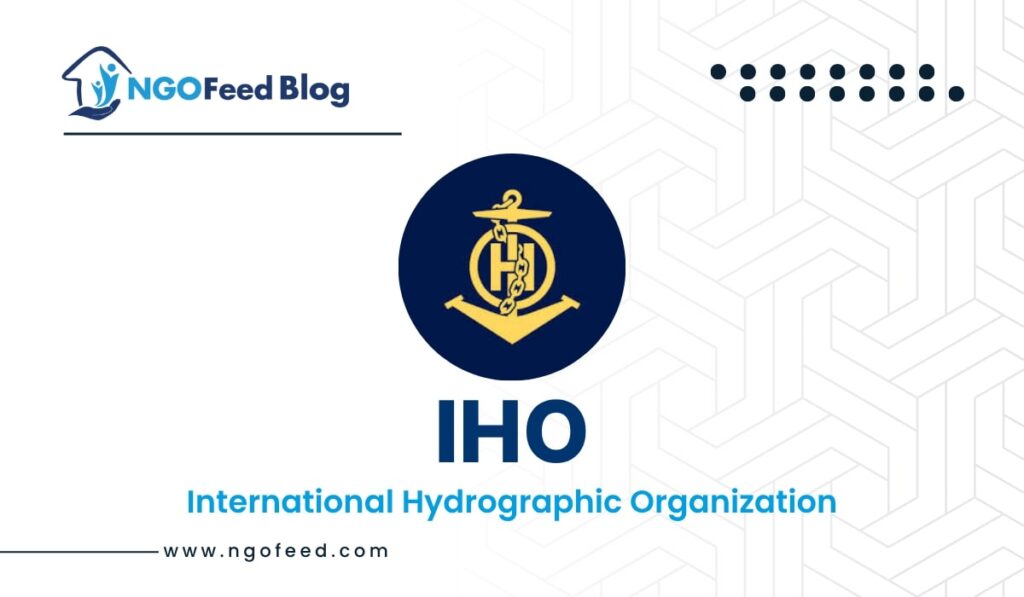The IHO Full Form is the International Hydrographic Organization that aims to survey and chart all of the world’s seas, oceans, and navigable waters. It was founded in 1921 and works to create standardisation in nautical charts and papers while coordinating the actions of national hydrographic administrations. It publishes guidelines for optimal survey use, promotes the development of hydrographic capabilities in the Member States, and offers best practices for surveys.
The IHO is the acknowledged competent authority for hydrographic surveying and nautical charting and has observer status at the UN. Conventions and other comparable documents frequently refer hydrography and nautical charting in accordance with IHO standards and specifications.
Table of Contents
IHO History
In 1921, the International Hydrographic Bureau (IHO) was founded (IHB). The current term was included in a new international convention on the IHO that was adopted by the then-member countries in 1970. Prior to the Convention on the IHO’s significant amendment taking effect on November 8, 2016, the IHO secretariat continued to go by its previous name, the International Hydrographic Bureau. Following that, the IHB was renamed the “IHO Secretariat,” which was located at the Organization’s headquarters in Monaco and was made up of an elected Secretary-General, two supporting Directors, and a small permanent staff (18 in 2020).
Also Read: UNDP India Research on Poverty Reduction and Climate Change Adaptation
Many maritime nations created hydrographic offices in the 19th century in order to provide tools for enhancing the navigation of commerce and navy boats through the provision of nautical publications, nautical charts, and other navigational services. Hydrographic methods, charts and publications showed substantial variances. A “permanent international commission” was proposed during an international maritime conference held in Washington, D.C., in 1889. The International Congress of Navigation in Saint Petersburg in 1908 and the International Maritime Conference in Saint Petersburg in 1912 both featured similar recommendations.
IHO Overview
| IHO | International Hydrographic Organization |
| Headquarters | Principality of Monaco |
| Formation | 21 June 1921 |
| Managing Director | Dr. Mathias Jonas |
| Method | Social science research |
| Website | www.iho.int |
| Official languages | English |
Also Read: The Role of Greenpeace India in Environmental Research and Advocacy
IHO Functions
- The IHO creates standards for nautical and hydrographic charting.
- Subsequently, its member nations and others adopt and use these standards in their surveys, nautical charts, and publications.
- Due to the nearly universal adoption of the IHO standards, all mariners and other users can consistently and easily recognise the goods and services offered by national hydrographic and oceanographic offices around the world.
- The establishment of Regional Hydrographic Commissions has been promoted by the IHO (RHCs). Each RHC serves as a platform to discuss additional issues of shared hydrographic concern in addition to coordinating the national surveying and charting operations of the nations within each region.
Achievements
- The study of the seafloor and the motion of the sea
- Standardization of navigational geographic information systems, marine cartographic products, hydrographic terminology, and maritime measures
- High effectiveness in quickly disseminating information about maritime safety
- Hydrographers and nautical cartographers are trained
Also Read: International Rescue Committee Research on Refugee and Migrant Support in India
Conclusion
In conclusion, the International Hydrographic Organization (IHO) is the world’s leading authority on marine charts and hydrographic surveys. Its job is to make sure that sailing is safe and consistent around the world. The IHO continues to improve marine understanding, increase safety at sea, and encourage international unity in hydrography through its standards, publications, and group projects.
Frequently Asked Questions (FAQs)
What is the IHO Full Form?
The IHO Full Form is International Hydrographic Organisation.
When is IHO Formed?
IHO is Formed in 21 June 1921.
What is the Goal of IHO?
Making sure that the world’s seas, oceans, and navigable waters are accurately surveyed and charted is one of the IHO’s main goals.

